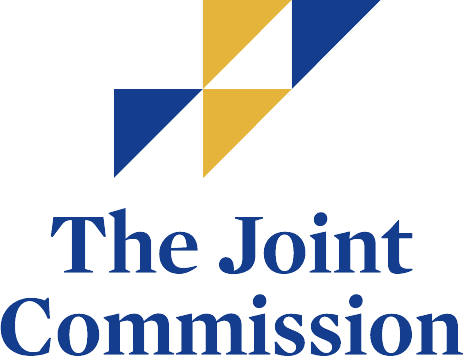Of the many mental health disorders out there, addiction can be one of the most dangerous. Medically speaking, substance abuse refers to the inability to stop using a substance even if it physically and psychologically harms you.
Some physical signs of substance abuse include a drastic weight changes, severe sleeping problems, and can lead to depression and anxiety.
More than that, SUDs adversely affects your behavior and disrupts your life. As a result, you’ll start prioritizing the substance over family, friends, work, and responsibilities.
From individual counseling for drug recovery to group therapy, there are plenty of places and techniques that can help you overcome a SUD. One of which is contingency management therapy.
What Is Contingency Management Therapy (CM)?
A form of behavioral therapy, CM (also called motivational incentives), uses tangible rewards to reinforce positive behaviors. In the case of addiction recovery, you get rewarded for milestones such as attending therapy sessions, negative drug tests results, and staying sober.

CM therapy can be done on its own or in addition to other forms of treatment, like medication-assisted treatment.
The Principles Of CM Programs
CM programs follow these seven principles:
Target behavior
This looks for positive behaviors (associated with measurable improvements) to amplify and negative behaviors (associated with drug use) to decrease or stop.
Choice of the target population
Some people are more suited to this type of program than others. CM is ideal for new patients or those with a history of poor success rates than those with ample motivation to progress.
Choice of reinforcer
The reinforcer is the driving force of CM programs. Because people are different, the motivator should be specific to them. Meaning, if they have no interest in the offered reward, they won’t progress and reach their goal.
Incentive magnitude
Programs should offer rewards with enough incentive to encourage abstinence and sobriety. Some people might need a larger reward to stay motivated and engaged. However, there’s still the matter of budget that needs to be considered.
Frequency of incentive distribution
Some programs reward people each time they show a positive behavioral change. Meanwhile, others work on a specified or variable rate.
Timing of incentive
Giving the people their reward as soon as they achieve the desired behavior proves the best way. This method builds a stable connection between the behavior and the reward.
Duration of intervention
The goal of CM treatments is long-term sobriety. Since treatment might take longer for some people, relapse prevention strategies are crucial to ending treatment.
CM Treatment Variations
There are two main varieties of CM programs such as voucher-based reinforcement (VBR) and prize incentives CM.
VBR
In VBR, you will get a voucher for every negative breathalyzer result or drug-free urine sample. Like most regular ones, these vouchers have a cash value you can use to get various goods and services that can be a part of your balanced and sober life.

Prize Incentives CM
In lieu of vouchers, prize incentives CM gives out chances to win cash prizes. CM programs usually last for at least three months.
Participants who supply negative drug urine or breath tests will draw from a bowl with prizes ranging from $1 to $100. Aside from that, you can also receive draws for completing weekly goals and attending counseling sessions.
Starting at one, your number of draws increases with every consecutive goal achieved and reset with every failed test or unexcused absences.
Is Contingency Management An Effective Way Of Therapy?
Several studies have found that contingency management can be very effective in treating SUDs and related concerns.
By nature, human beings pursue behaviors and activities that elicit a sense of positivity, such as rewards. As a result, these rewards enforce good behaviors and encourage you to continue and repeat them in the future.
CM builds on the idea that social, biological, and environmental factors influence substance use. The high or euphoria from the drug outweighs all the adverse effects it also brings, making it feel rewarding. As a result, you tend to continue using it despite the detrimental consequences.
When in recovery, you’ll go through a number of challenges that include declining financial situations, strained relationships, and intense physical and mental health issues. Although it’s all part of the process, you may not see it as a reward but rather a punishment.
This is where contingency management interventions come in. If you enter a CM program, you get rewarded for desirable behavioral changes. Actions like attending treatment, maintaining program expectations, and staying sober will get you rewarded.
In principle, the positive reinforcement from CM will equal or outweigh the “benefits” or “rewards” from using drugs.
Barriers and Criticisms of CM Therapy Implementation
Despite proof of its efficacy, CM therapy still faces some limitations and criticisms. Society and medical professionals alike have voiced their concerns about CM intervention.
- Promotes gambling
Some members of the practitioner community think that prize intervention CM promotes gambling because of the element of chance. More than that, SUDs and pathological gambling can be comorbid.
- Benefits don’t go beyond treatment
Some don’t believe in the stability of CM treatment. Without the motivators or reinforcements, patients might relapse.
- Money can cause relapse
Another criticism to prize intervention CM is that it can lead to a relapse. With monetary rewards, you might be tempted to spend that on the substance rather than on something that will help them progress in rehab.
- It’s an unpopular method
Although CM proves to be an effective treatment, unawareness continues to be a barrier to its implementation. Only a handful of psychiatrists are familiar with CM intervention.

CM Therapy: One Of Many Addiction Treatments
Addiction remains to be one of the biggest mental health problems today. Not only does it affect one’s physical health, but it can adversely impact their mental, emotional, and social disposition.
Fortunately, contingency management therapy is just one of many treatments you can use on your recovery journey. Using tangible rewards, CM reinforces good behavior and encourages you to keep it up in the future.
Even though this form of cognitive-behavioral therapy carries some barriers and criticisms, CM is still an effective treatment for substance addiction.
So, have you decided on where to begin your recovery journey? Turn to Buena Vista Health and Recovery Center. Fully equipped, our team of professionals provides addiction help to anyone struggling with a substance use disorder. Along with a variety of treatment programs, we can help you get your life back.
You can contact us at (800) 922-0095, or go to any of our locations:
CHANDLER
(480) 680-0606
3033 South Arizona Avenue
Chandler, Arizona 85248
TUCSON
(520) 436-7860
5151 East Pima Road
Tucson, Arizona 85712
SCOTTSDALE
(623) 323-7986
8171 E Indian Bend Rd
Scottsdale, AZ 85250






